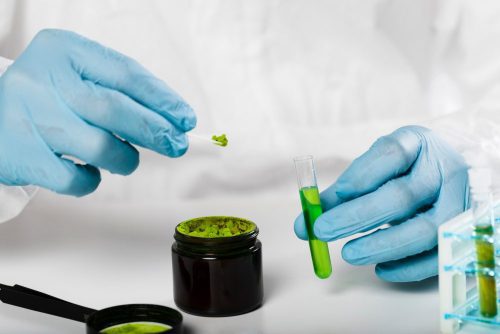
Extraction of Rare Earth Metals using Microbes
Harnessing Microbial Power for Sustainable Mining
Skills you will gain:
This innovative program focuses on leveraging the power of microbial organisms to revolutionize the extraction process of rare earth metals. By harnessing the natural abilities of microorganisms to interact with and process metals, the program aims to develop novel and environmentally friendly techniques for recovering these essential materials from diverse sources such as ores, industrial waste, and electronic devices. Through interdisciplinary research and collaboration, the program seeks to optimize microbial bioleaching and bioaccumulation processes, design efficient bioreactor systems, and advance the understanding of microbial-metal interactions, with the overarching goal of providing sustainable solutions to meet the increasing demand for rare earth metals while minimizing environmental impact.
Furthermore, this program envisions a transformative shift towards a circular economy model where waste becomes a valuable resource, reducing reliance on conventional mining practices and mitigating environmental degradation. By harnessing microbial bioleaching and bioaccumulation technologies, the program aims to contribute to the development of a more sustainable and resilient materials supply chain. It seeks to unite stakeholders from academia, industry, and government sectors to drive innovation, promote responsible resource management, and pave the way for a greener and more sustainable future in rare earth metal extraction and production.
Aim: The aim of this program is to harness the unique capabilities of microbial organisms to develop efficient and environmentally sustainable methods for extracting rare earth metals from various sources, revolutionizing the supply chain of critical materials essential for modern technologies.
Program Objectives:
- Understand the biochemistry and genetics of microbes that are effective in leaching rare earth metals.
- Explore the environmental impacts and benefits of using microbial technology in mining.
- Develop practical skills in designing and implementing bioleaching processes.
- Analyze current case studies and research trends in microbial extraction methods.
What you will learn?
Week 1: Fundamentals of Rare Earth Elements (REEs) and Microbial Extraction
-
Overview of REEs: Strategic importance and supply challenges
-
Deep science of microbial interactions with metal ions
-
Types of microbes used in bio-mining (acidophiles, fungi, etc.)
-
Environmental and economic advantages of bioleaching
Week 2: Deep Tech Microbial Processes for REE Extraction
-
Bioleaching vs. traditional extraction techniques
-
Deep tech workflows: Microbial culture optimization
-
Bioreactor setups and scaling considerations
-
Case studies: Lanthanum, Cerium, and Neodymium bio-extraction
Week 3: Characterization, Monitoring & Process Analytics
-
Biosorption kinetics and metal recovery efficiency
-
Analytical tools: AAS, ICP-MS, SEM for REE detection
-
Monitoring microbial activity and metabolite profiling
-
Sustainability metrics and lifecycle impact assessment
Week 4: Industrial Applications, Innovation & Policy Trends
-
Deep science to industry: Translating lab insights to field
-
Integration into circular economy and e-waste management
-
Emerging startups and global projects in microbial mining
-
Regulatory frameworks and ethical considerations
Intended For :
- Educational Background: Many research opportunities in this field require at least a bachelor’s degree in a relevant scientific discipline such as biology, biotechnology, microbiology, environmental science, chemistry, or materials science. Advanced degrees (master’s or Ph.D.) may be preferred for more specialized or leadership roles.
- Research Experience: Prior experience in laboratory research, especially in areas such as microbiology, biochemistry, biotechnology, or materials science, can be beneficial. Experience with techniques such as microbial culturing, molecular biology, analytical chemistry, or materials characterization may be particularly relevant.
- Skills and Expertise: Specific skills and expertise relevant to the research project, such as microbial cultivation and manipulation, molecular biology techniques (e.g., genetic engineering), metal extraction methods, analytical techniques (e.g., spectroscopy, chromatography), and data analysis, may be required or preferred.
- Interest and Motivation: Demonstrated interest in the field of rare earth metal extraction, as well as a clear understanding of the potential applications and implications of the research, can strengthen your eligibility.
- Other Requirements: Depending on the specific project and institution, there may be additional requirements such as language proficiency, computational skills, or regulatory compliance training.
Career Supporting Skills
